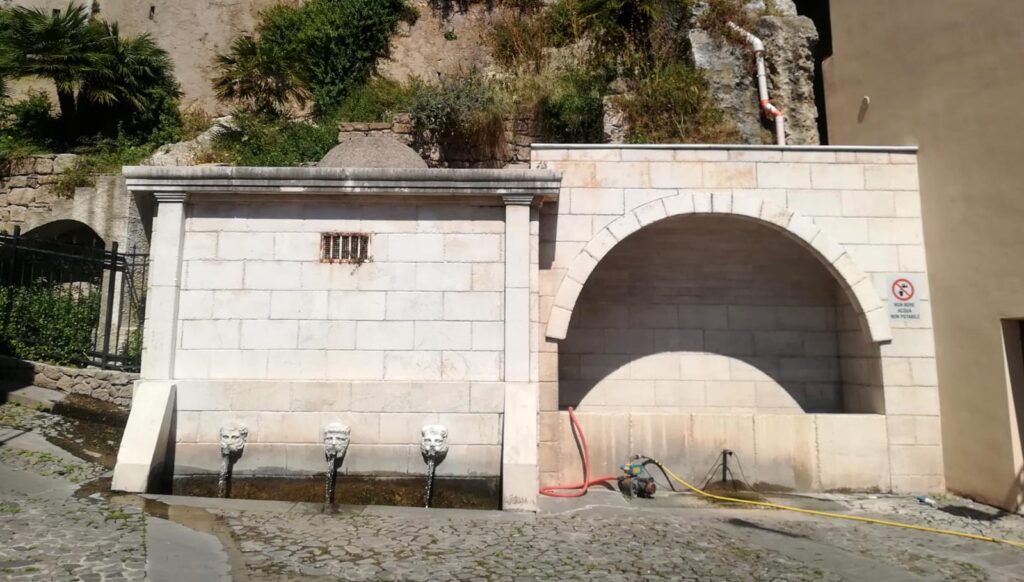Uri
Ittiri and Uri‘s major contribution to the Angioyan cause have their fundamental roots in the feud that engaged the two communities from the middle of the 18th century with the Ledà family, holder of the feud that united the aforementioned villages after a bitter dispute. Burdened by a tax yoke that the feud lords aggravated by committing scandalous abuses, the two communities engaged in a prolonged judicial fight with the Ledà family in the decades preceding the Sardinian Revolution.
During this period, Don Vincenzo Serra emerged as one of the most intriguing individuals of the second half of the 18th century in Sardinia, using his charisma, culture, and expertise to keep the feudal lord’s bullying in check.
A ruling class gathered around Casa Serra, a class capable of coagulating and animating the popular forces of the Ithyrians and Urians with the goal of emancipating them from feudal subjugation.
As a result of their disobedience, the mayors, community councils, and heads of families of Ittiri and Uri signed the so-called ‘instrument of union’ on March 17, 1796, on the patio in front of the parish church of San Pietro at Ittiri, swearing to ‘no longer recognise any feudal lord’.
The 'instrument of union' as a means of liberation from feudalism
The so-called ‘Act of Redemption‘ of the two settlements of Ittiri and Uri, signed by notary Cosimo Serra on 17 March 1796, is one of the documents that best represents the echo of insurrection. The paper, written in Italian, emphasises the legal subversion and the desire of the locals to redeem their land. The priests, ‘knights and leaders’ of the villages of Ittiri and Uri signed the document. However, following Angioy‘s loss and escape, a violent repression was carried out.
The viceroy commissioners’ most politically significant act was the forced revocation of these notarial acts, sworn by the communities of Logudoro: the papers were torn from the registers of the government archives and replaced by retractions, under threat of severe and heavy retaliation. The wind of revolution, however, did not die away, with people continuing to take up arms against the baronial factors or resorting to legal action to protest the ever-increasing number of violations.
Sa Funtana manna
In 1777, the Countess of Ittiri, Stefania Manca Amat, commissioned the architect Gavino Pirinu from Sassari to build a fountain in the village of Uri for fifty Sardinian scudi. The fountain’s current location was chosen to facilitate the flow of water from the natural spring.
Its architectural style is straightforward: the marble fountain has a moulded frame at the top supported by two pilasters with a three-band column capital. There are three drainage outlets at the bottom, each with a distinct anthropomorphic head of a bearded man; spring water flowing from ornamental metal parts that approximate the figure of a river fish.
The spouts were strategically positioned to facilitate filling the jugs. There was a drinking trough located in a different structure to the right of the fountain. A round arch frames a sizable basin at the base.
Our Lady of Patience Church
Located in Carrela de Cheia‘s Piazza Vittorio Veneto, the Our Lady of Patience Church is a prominent landmark in the town core. Built as St. Mary in the 16th century, it was given the odd title of Our Lady of Patience about two centuries later for reasons that are still unclear. The church features six side chapels in addition to a central nave, all constructed out of trachyte stones. Four underground crypts that were in use up until 1840 are still there. The walls are plastered and covered with coloured marble, while the floor is made of grey marble slabs.
St. Anthony, the Souls, the Holy Sepulchre, and Our Lady of Paulis are all honoured in the side chapels. The octagonal bell tower’s domed roof shows the traces of several repairs. A windstorm in 1917 completely wrecked the majolica-coated dome, which had a silver weathervane shaped like a rooster above. The church was once lighted by oil lamps and a large silver lamp in the middle that was raised by a pulley and hung on a chain. The building’s initial appearance was permanently changed between 1948 and 1950 by a major refurbishment.
Our Lady of Paulis
The Cistercian monks received Paulis, the court of Save, and the districts of Augusolo and Hennene from Judge Comita of Torres in 1205, when she authorised the establishment of a monastery. Animals and a variety of items, such as two boats and a large number of books, were also contributed. The monks at the Our Lady of Clairvaux-dedicated abbey, which stood next to the monastery, had administrative and political independence. Up until the monastery was eventually abandoned in 1420, the monks regained the land and encouraged agro-pastoral activities. The church continued to serve as the parish of Paulis and, starting in 1850, as the village church of the parish of Uri, despite the structures collapsing.
Very little of the whole complex—which mostly collapsed today—remains. On the section of the altar that has been preserved the best in the whole monastery are drawings of Gonario of Torres and St. Bernard of Clairvaux, the founder of the Cistercian Order. The paintings were made in the first part of the 20th century by Pietro Cao, a hermit-scholar who lived among the ruins of the abbey and monastery until 1958 and carried out various modifications.
Paulis and 'Su padre biancu
Pietro Cao, a peculiar and somewhat eccentric figure of a scholar, passionate in archaeology, used to wander around dressed as a type of a monk, clothed in a white robe ascribable to his own religious order (but similar to the Cistercian habit).
He was a well-known figure in Sassari and surrounding towns in the 1950s, so much so that some famous painters of the time, such as Costantino Spada or Salvatore Fara, depicted him engrossed in his learned dissertations amidst groups of drunkards or common people who often mocked him or did not pay attention to him.
Cao, known as ‘Su padre Biancu‘ by the people of Uri, lived among the ruins of the Cistercian monastery of Paulis and experienced the monument’s devastation and attempts at restoration in the twentieth century.
Pietro Cao was born in Cagliari in 1900, graduated from the Florence Academy of Fine Arts in 1927, studied at the Pontifical Institute of Christian Archaeology, and taught at secondary schools in Tuscany and Sardinia. Around 1930, he began his wanderings in search of religious ruins: he was drawn to the abbey of Paulis, where he lived until his terrible death in September 1958 at the hands of one of his aides who dwelt with him in the old monastery. At Paulis, he renovated the church in preparation for the possible return of the Benedictine monks, and he began cleaning up the walls and elevations of the entire complex with the aid of some peasants from Uri and Ittiri.
Bibliography
G. Altea, M. Magnani, Storia dell’Arte in Sardegna. Pittura e Scultura dal 1930 al 1960, Nuoro, 2000
G. Biddau, Su alcuni documenti dell’Archivio di Piero Cao, in «Coracensis», 1994
G. Sechi, Uri e la sua storia, s.d.; s. l.
Uri, La storia, in Coolturistika: cinque paesi un territorio unico, Progetto ANCI 2011
G. Vulpes, I signori del feudo d’Ittiri e Uri, Sassari, 1999
G. Vulpes, Don Vincenzo Serra e la rivolta antifeudale ittirese, Sassari, 2008
G. Zanetti, I Cistercensi in Sardegna: le abbazie di S. Maria di Corte, di Paulis, e di Coros, in «Archivio storico sardo di Sassari», 1976 Vol. 2 (2)
Credits
A. Nasone, G. Ruggiu, S. A. Tedde



